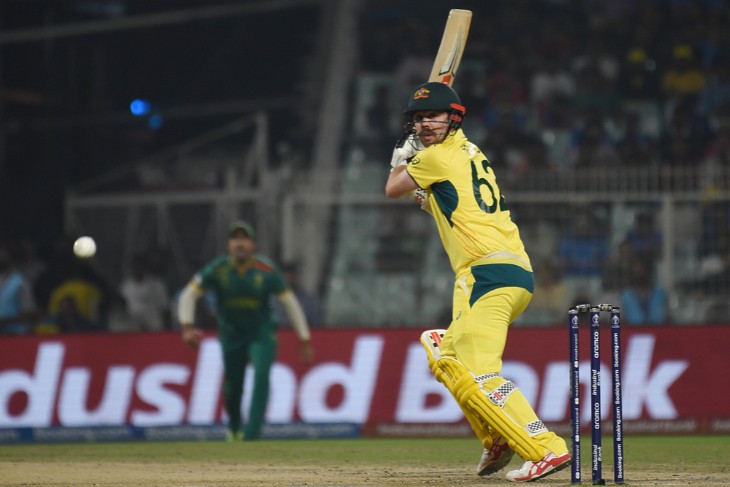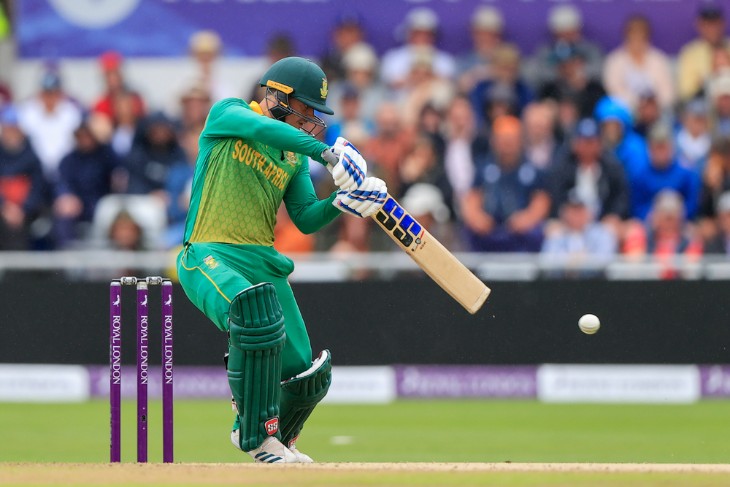- Understanding Calorie Burn in Cricket
- The Role of Different Cricket Formats in Calorie Expenditure
- Calorie Expenditure in Each Cricket Format
- Maximising Calorie Burn in Cricket Through Training and Diet
- Cricket's Overall Impact on Fitness and Health
- Enhancing Cricket's Calorie-Burning Potential through Strategy and Technique
- Cricket and Holistic Health: Beyond Calorie Burning
- In Summary
Cricket, a sport that is steeped in history and beloved by millions all over the globe as well, is not just a test of skill and strategy but also an excellent way to keep fit and healthy. When it comes to burning calories, lots of sports enthusiasts or health-conscious individuals usually ask themselves, "How many calories do you burn playing cricket?"
Thus, this article will attempt to answer this question comprehensively by shedding light on the calorie-burning potential of cricket and its overall impact on fitness.
Understanding Calorie Burn in Cricket
To understand how much energy you use while playing cricket, you need to take into account several critical factors. The number of calories burnt depends on the intensity of the game, duration of play, body weight and metabolic rate among others. This makes cricket different from other sports since it combines short bursts of hard work with some pauses.
In cricket, you have three main activities: batting bowling and fielding which each comes with their physical demands. Batting involves sprinting between wickets at full speed as well as hitting balls with force. It takes several seconds of high-intensity effort which leads to increased calorie burn rates. Energy consumption during bowling mostly fast bowling is very high too.
It engages various muscle groups and increases your heart rate thus making you lose more calories. Even though fielding may appear less strenuous; it also contributes significantly towards calorie expenditure as players are required to be agile, have quick reflexes sometimes run across the ground.
The format in which the cricket match is played also influences calorie burn. Shorter formats like Twenty20 (T20) or One-Day Internationals (ODIs) are usually more intense and result in higher calorie expenditure compared to the longer Test matches. However, even Test matches with their long duration can result in a significant amount of calorie burn over time.
On average a person can lose about 300-500 kilocalories per hour when playing cricket. Nevertheless, the intensity of the game and the role a player performs can influence this amount. Batting, bowling or fielding in cricket is how one can exercise and burn calories in a fun way.
The Role of Different Cricket Formats in Calorie Expenditure
Twenty20 (T20) Cricket
In Twenty20 cricket, each team plays a single innings of 20 overs making match lengths short and fast-paced. This format demands high-energy bursts from players resulting in significant calorie burns.
Rapid running between wickets, big hitting as well as quick fielding and bowling are some of the reasons why more calories are used up here. T20 cricket is intense and engaging hence requires constant movement by its participants making it a good method of burning calories fast.
One-Day Internationals (ODIs)
One-Day Internationals, typically lasting around 7-8 hours with each team playing 50 overs, offer a balanced mix of intensity and duration. Unlike T20 where there’s less time spent batting bowling or fielding ODIs provide for some steady calorie loss during an entire day.
ODI games involve physical exertion combined with strategic play thus ensuring continuous energy expenditure. For those who want both endurance and intensity in their cricket experience, ODI is the best choice.
Test Cricket
Test cricket, the longest format of the game, spans five days with two innings for each team. Despite being less intense than T20s and ODIs, test cricket contributes to calorie expenditure. The longer duration of play ensures that players spend considerable time batting, bowling and fielding thus accumulating calories burned over the days.
Test cricket is about endurance, concentration and fitness rather than an ordinary type of active game aimed at burning calories. It's ideal for those who relish a more cerebral and protracted form of the game.

Calorie Expenditure in Each Cricket Format
Every cricket format affects how many calories you can burn differently. These are just some examples: The quick intensity of T20; The balanced challenge of ODIs; And Test cricket is the most physically demanding form of this sport that helps keep fit and lose weight. There are many different formats from which players can choose according to their specific needs and goals on health while participating in one favourite sport.
Calorie Burn in Batting, Bowling, and Fielding
Batting
This is because when you are batting you are constantly on the move running between wickets and hitting balls. All these activities have a quick burst of energy requirement hence an increase in heart rate leading to enhanced calorie burning.
The number of calories burned depends on the intensity of your shots or speed when running between wickets while batting. Batting as a part of playing cricket involves physical activity coupled with thinking that keeps one healthy keeping fit all through.
Bowling
In cricket fast bowling particularly is an intense exercise that burns many calories. When you bowl as a player, especially a fast bowler different groups from legs to arms including shoulders get involved in it. There must be strength power and stamina behind every delivery.
Thus during each spell bowlers continue burning fat due to the permanency they do on the pitch together with every challenging process. In general terms spinning or medium pace bowling requires quite a lot of effort and helps remain active and burn calories.
Fielding
While not as intense as batting or bowling, fielding is critical for burning calories. Fielders are always on their toes, ready to chase the ball, dive for catches or sprint across the ground. These qualities need agility, quick reflexes and stamina.
Moving around and running while in the fielding position ensures even calorie burning. Also, more time spent on the field means more burnt calories. Therefore fielding in cricket is important for fitness along with meeting other match-winning purposes.
Estimating Calorie Burn During a Cricket Match
Factors Affecting Calorie Burn: To estimate how many calories you burned during a cricket match, there are several factors to consider such as; How long did the game take? What was your level of play like? Were you batting, bowling or fielding? Apart from this weight of your body mass together with metabolism determines how many calories you burn tonnages. For instance, bigger people are likely to burn more than smaller ones.
Average Calorie Burn Rates: Typically, playing cricket may help in the burning of a considerable number of calories. Estimates are that an average person can burn about 300-500 calories per hour while playing cricket. However, this number can vary. For instance, you might burn more calories if you are batting aggressively or involved in fast bowling.
Using Technology to Track Calorie Burn: If you want to know exactly how many calories you burn during a game of cricket, then fitness trackers and smartwatches might be useful for such purpose. These devices track physical activity using sensors and give better estimates of the number of calories burned. This may be particularly helpful in cricket where there is varying intensity throughout the game.
Maximising Calorie Burn in Cricket Through Training and Diet
Maximising calorie burn in cricket involves more than just playing the game; it also requires focusing on training and diet. To enhance your performance and increase calorie expenditure, incorporating specific training routines into your schedule is crucial.
Strength and conditioning exercises help build muscle and improve endurance, allowing you to be more active and energetic during the game. Cardiovascular workouts, such as running or cycling, boost your stamina and heart health, enabling you to play longer and with greater intensity.
In addition to physical training, your diet plays a significant role in maximising calorie burn. Eating a balanced diet that provides the right mix of nutrients is essential for maintaining energy levels and improving performance. Foods high in protein support muscle recovery and growth, while carbohydrates give you the energy needed for intense physical activity. Staying hydrated is equally important, as it helps maintain optimal body function and performance.
It's also important to time your meals and snacks appropriately. Eating a nutritious meal a few hours before a cricket match ensures you have enough energy, while a protein-rich snack after the game helps with muscle recovery. Avoiding heavy meals right before playing can prevent discomfort and ensure you're at your best.
Finally, rest and recovery are crucial aspects of maximising calorie burn. Getting enough sleep and allowing your body to recover after intense physical activity helps prevent injuries and keeps you in top condition for the next game.
To maximise calorie burn in cricket, a combination of targeted training, a balanced diet, proper hydration, and adequate rest and recovery is essential. By focusing on these aspects, you can enhance your cricket performance and make the most of the sport's calorie-burning potential.
Cricket's Overall Impact on Fitness and Health
- Improving Cardiovascular Health: Playing cricket regularly can significantly improve your cardiovascular health. The sport involves a lot of running, whether you're batting, bowling, or fielding, which strengthens your heart and lungs. This increased cardiovascular activity helps lower the risk of heart disease, reduces blood pressure, and improves circulation. Regular cricket play ensures that your heart and lungs are getting a good workout, leading to overall better heart health.
- Building Muscle Strength and Endurance: Cricket is also great for building muscle strength and endurance. Batting and bowling require upper body strength while running and fielding strengthen the legs and core. This all-around physical activity helps tone and build muscles throughout the body. Additionally, the endurance required for longer formats of the game, like ODIs and Test matches, improves overall physical stamina.
- Enhancing Coordination and Balance: Playing cricket enhances your coordination and balance. The sport requires precise hand-eye coordination, especially when batting or catching the ball. Fielding, with its quick movements and sudden changes in direction, improves balance and agility. These skills are not only important for cricket but also benefit your daily activities, making you more agile and coordinated in general.
- Promoting Mental Well-being: Cricket is not just physically beneficial; it also has a positive impact on mental health. The sport requires concentration, strategic thinking, and teamwork, which can help improve focus and reduce stress. Being part of a team and engaging in a competitive yet friendly environment promotes mental well-being and social interaction. Cricket provides a fun and engaging way to relieve stress, foster friendships, and improve overall mental health.

Enhancing Cricket's Calorie-Burning Potential through Strategy and Technique
- Adopting Aggressive Batting Tactics: One way to enhance calorie burn in cricket is by adopting aggressive batting tactics. When you bat with more power and speed, you engage your muscles more intensely, leading to higher calorie expenditure. Quick running between wickets and hitting powerful shots not only increases your heart rate but also works out your arms, legs, and core. By focusing on aggressive batting, you turn your time at the crease into an effective workout session.
- Incorporating Endurance in Bowling: Bowlers can increase their calorie burn by focusing on endurance. This involves maintaining a consistent energy level throughout your spell, especially for fast bowlers. The repetitive action of running up to the crease and delivering the ball with force engages multiple muscle groups, boosting calorie expenditure. By building endurance, bowlers can maintain a high level of intensity over a longer period, leading to more calories burned.
- Enhancing Fielding Dynamics: Fielding also offers an opportunity to burn more calories. By being more dynamic in the field – moving quickly, diving for catches, and throwing with force – you increase physical activity, which in turn boosts calorie burn. Quick reflexes and agile movements keep your body active and engaged throughout the game. Making the most of your time in the field by staying on the move can significantly add to your overall calorie expenditure in cricket.
Cricket and Holistic Health: Beyond Calorie Burning
Cricket's impact on health goes far beyond just burning calories; it encompasses a holistic approach to overall well-being. This sport not only helps in physical fitness but also plays a significant role in improving mental and emotional health.
Mentally, cricket requires concentration, strategic thinking, and quick decision-making. These cognitive challenges help sharpen the mind, improve focus, and enhance problem-solving skills. The mental aspect of the game, such as anticipating the opponent's moves or planning your strategy, keeps the brain engaged and active.
Cricket also offers emotional benefits. Being part of a team and participating in a sport you enjoy can significantly boost your mood and self-esteem. The camaraderie and teamwork involved in cricket foster a sense of belonging and community, contributing to emotional well-being. The sport provides an escape from daily stresses, offering a way to relax and unwind. This mental break can help reduce anxiety and depression, leading to better mental health.
Socially, cricket is a great way to connect with others. It brings people together, regardless of age or background, creating a sense of unity and friendship. This social interaction is crucial for emotional support and can lead to lasting relationships. The sport encourages communication and collaboration, which are essential skills in both personal and professional life.
Physically, apart from burning calories, cricket helps improve overall fitness. It strengthens muscles, increases stamina, and enhances coordination and balance. Regular play can lead to a healthier lifestyle, reducing the risk of chronic diseases and improving overall physical health.
In Summary
Cricket is more than just a sport; it's a comprehensive workout that can significantly contribute to one's fitness journey. Whether you're a seasoned cricketer or a beginner looking to incorporate a fun, calorie-burning activity into your routine, cricket offers an enjoyable and effective way to stay active and healthy. So next time you pick up that bat or ball, remember that you're not just playing a game; you're also giving your body a fantastic workout.


